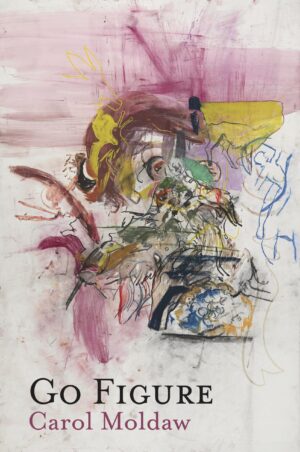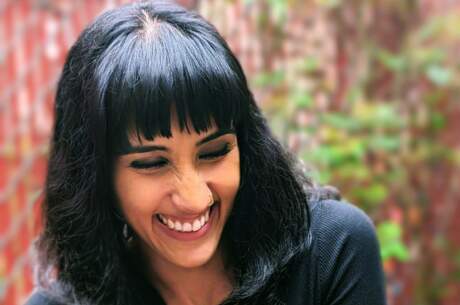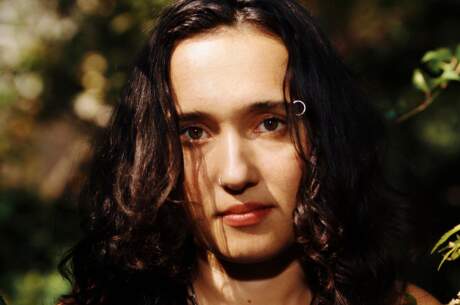In Their Own Words
Carol Moldaw on “Painter and Model (I)”

Painter and Model (I)
after Lucien Freud’s Painter and Model
Because she paints barefoot, she’s barefoot in his painting
of her painting. Well, not painting, but modeling for him
as the painter she is and gazing toward her ostensible model,
splayed nude on a battered brown leather Chesterfield.
Well, not gazing: her eyes, as he painted them, are downcast,
the lids closed. If they were open, it seems by the bowing
of her head that she’d be looking at the model’s outthrust knee—
though what the viewer notices first and foremost is what
the paintbrush idling between her clasped hands is angled toward:
the model’s resting uncut cock. Both her inner and his outer gaze
are ambiguous, distanced; his, attending somewhere beyond
the painting he’s in—perhaps focused on the back of the canvas
being painted as he lies there, or on the fanatical painter
(not her, standing at his side, who he did, in fact, model for,
but the one outside the frame who positioned, checked,
repositioned them both, on and on, just so . . .) or beyond him
and, in a reverie of the imagined future, onto us, our scrutiny.
Akimbo, one knee rests on the couch’s pockmarked back
while the other extends over its edge, the weight of his heel
on the floor, his curled toes pointing toward the same heap
of squeezed-out paint tubes and crisscrossing brushes
that her right foot is on the periphery of, her toes pressing
on a tube that’s oozing olive green. To me, this—
a bottom left-center tangent made by the intersection
of lines each set of toes invisibly extends—is the painting’s
not-so-secret heart. Her smock dress, used as her paint rag,
is its own action painting; the cornered walls, a fresco’s undercoat.
Reprinted from Go Figure (Four Way Books, 2024) with the permission of the author.
On “Painter and Model (I)”
Visual art has long had a powerful hold on my poetic imagination and when I first saw an image of Lucien Freud’s “Painter and Model,” many aspects of it compelled me. I was led to the painting by my interest in Celia Paul, the British painter portrayed in it, and then I was taken by its painterliness, its rich surface, and what struck me as the audacity of its central nude. Finally, its twisty ironies, which reading Paul’s memoir, Self-Portrait, had alerted me to, but which I could see for myself, matched obsessions of my own.
In “Painter and Model,” Paul is essentially modeling as herself: a painter modeling as a painter of a reclining male model in a painting by her older, famous, erstwhile lover. The painting is Freud’s though, not Paul’s, and in it, Paul’s eyes are downcast, which, as she notes in Self-Portrait, they are in all the paintings of her that Freud painted. She is holding a paintbrush but not painting, her canvas isn’t in the frame, and she isn’t the painting’s central figure. Contrasting her experience of being Freud’s model with that of painting her own self-portraits, Paul wrote, “I don’t need to stage a drama about power; I am empowered by the very fact that I am representing myself as I am: a painter.”
I chose to base my poem on Freud’s “Painter and Model,” rather than Paul’s very different but equally evocative self-portrait, also titled “Painter and Model,” named deliberately and painted after Freud’s death (and in which her eyes are also downcast), because I was drawn to the contradictions and tensions in Freud’s painting . . . tensions I don’t know whether he himself cared about, but which I do. Questions of self and art, of representation and self-representation, subject versus object, roles versus essence, became central not just to this poem, but to Go Figure as a whole. As Theodore Roethke put it in the lines which serve as the book’s epigraph, “Which I is I?” As a female artist who has also been depicted by others, and who enjoys a complex network of close relationships and diverse roles, I know that question quickens my work.



